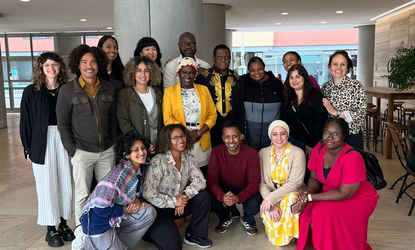We have made a commitment that our investment portfolio will be net zero in terms of carbon emissions by 2040 at the latest. But we believe that the actions we have already taken, and what we do over the next decade, are what will make the most difference.
It is vital that the commitments to net zero being made by financial institutions translate into real world impact as soon as possible, so that we all contribute to substantial emissions reductions before 2030.
Our intention over the coming years is to make a positive contribution to the low carbon transition as well as investing in companies that are positioned to benefit.
We will do this by:
- Continuing to provide grant-funding to organisations that work to influence corporate behaviour.
- Avoiding funds which hold fossil fuels.
- Engaging with our investment managers and advisors on relevant issues to drive real world change.
- Engaging with businesses on the transition and promoting transparency.
- Investing in climate solutions (for example alternative energy, infrastructure, pollution prevention).
Net zero with real world impact
Our work will fall into two areas:
- Aligning the portfolio with a net zero target
We aim to position the portfolio to perform well by avoiding the losers and holding the winners as the economy transitions. We will focus on carbon emission and carbon intensity analysis and making sure there is good transparency into the underlying holdings across the whole portfolio. We aim to back good quality businesses, support innovation, and promote transparency.
- Contributing to real world impact
We are aware that just selling our high emitting investments does not have a direct impact in the real world. As shareholders we also need to encourage businesses to change to a low carbon model. We can do this by voting and engagement, especially with fossil fuel consuming industries like the power industry.
Our progress to date
We have reduced the carbon intensity of our investment portfolio by around 75% since 2017, mainly by exiting a handful of funds which contained large positions in the highest carbon emitters.
While portfolio emission reductions will be harder from here, we see good opportunities for both investment and environmental impact going forward. Based on what we know today, there will remain some residual, hard to abate, portfolio emissions even twenty years hence and it is likely that some form of offsetting with net-negative investments will eventually be needed.
The figure below shows Esmée Fairbairn Foundation's Weighted Average Carbon Intensity over time, compared with the MSCI ACWI.

What will we be doing next?
During 2022, we will be agreeing progress measurements for different parts of the portfolio and, in particular, establishing baseline estimates for the illiquid investments in the portfolio. We will also be contacting all our managers to let them know more about our net zero strategy and that we will be monitoring their alignment with the Paris climate accord on an annual basis.
We also recognise that we can use our role as an investor to make a positive contribution to other societal challenges such as biodiversity loss and inequality, which in many cases have direct interdependencies with getting to net zero. We are exploring our approach to responsible investments this year and the role that our endowment can play going forwards. Part of this exploring and learning is being done through our £10m impact investing allocation and our partnerships with organisations such as the Green Finance Institute and ShareAction.
Over the next five years, we anticipate researching and investing in approaches to carbon avoidance (e.g. renewable power) or carbon sequestration (e.g. forestry) while recording and tracking robust measures of emissions avoided or offset. We will increase our exposure to climate solutions and engage with those managers who are not offering full transparency across the underlying portfolio, finding replacement funds where necessary.
The figure below shows the actions required to meet our commitments, which will be varied, depending on how well positioned companies are to manage the transition.

On a ten-year time horizon, we will have aligned the investment portfolio with the goals of the Paris Climate accord. Some actions will be particularly challenging, but they are firmly aligned with our focus on being a long-term investor and will ultimately be beneficial to our investment portfolio.






